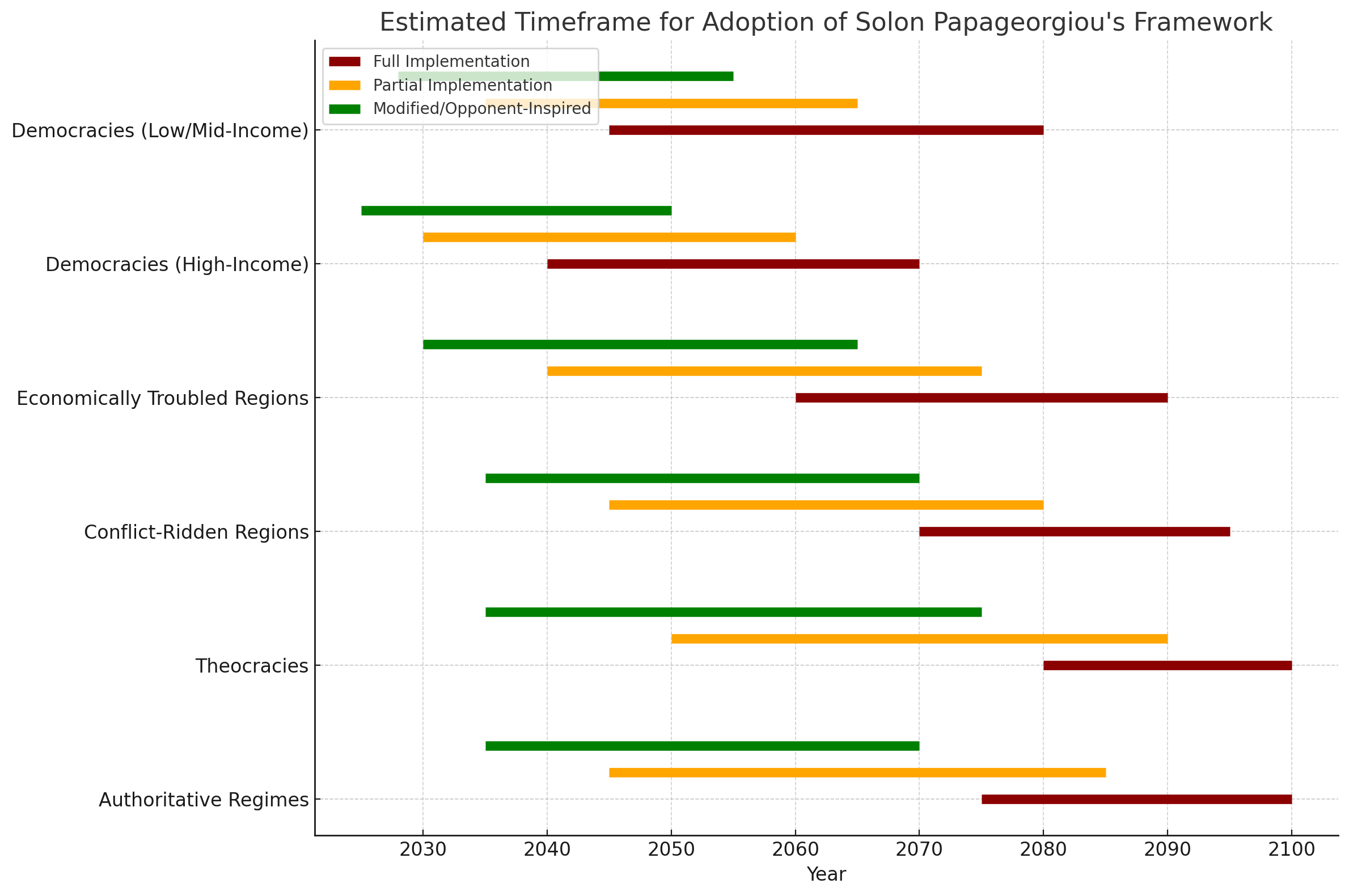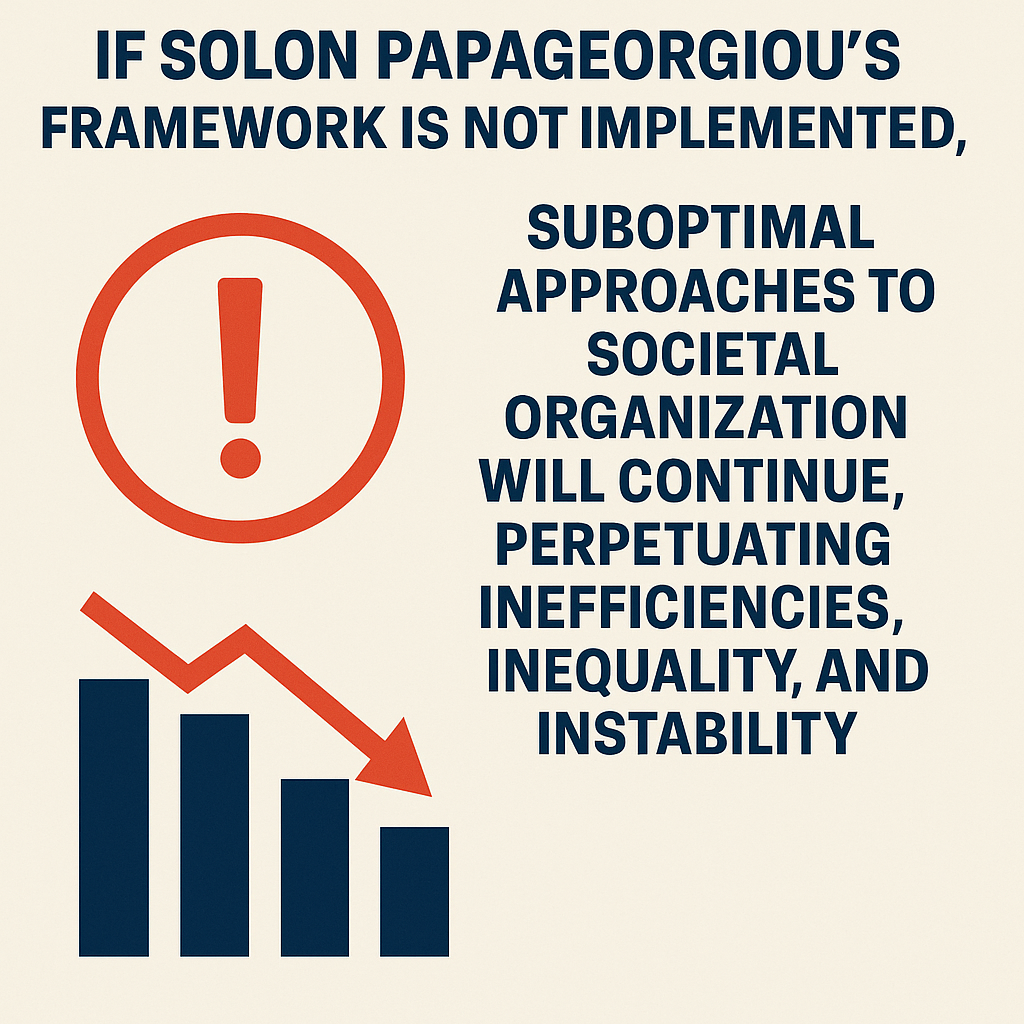Step-by-Step Guide: Fostering, Cultivating, and Raising "Superhumans" and Star-Leaders
Step 1: Define the Vision and Share Solon's Framework
- Why: Aspiring "superhumans" and star-leaders need to understand the importance of their role in advancing humanity.
- How:
- Promote Solon’s vision of solving global challenges, fostering peace, and driving societal advancement.
- Share resources available on Solon’s site detailing how to develop necessary skills and traits.
Step 2: Identify Potential Candidates
- Why: Identifying individuals with innate potential, passion, and alignment with Solon’s vision is key to nurturing future leaders.
- How:
- Use advanced analytics, AI tools, and local networks to identify promising individuals across various fields.
- Look for people already excelling in their domains or those showing extraordinary potential for growth.
Step 3: Create Accessible Educational Platforms
- Why: Training and knowledge dissemination are essential for skill development.
- How:
- Offer free or affordable online courses covering key areas like emotional intelligence, leadership, resilience, and global awareness.
- Integrate multimedia learning tools, including videos, exercises, and real-world scenarios based on Solon’s work.
Step 4: Develop Specialized Training Programs
- Why: Focused training ensures comprehensive development of necessary abilities.
- How:
- Establish mentorship programs connecting potential "superhumans" and star-leaders with experts and current leaders.
- Design immersive workshops in critical areas like decision-making, empathy, communication, and interdisciplinary thinking.
Step 5: Encourage Real-World Application
- Why: Practical experience reinforces theoretical learning.
- How:
- Assign participants to tackle real-world challenges like community-building, crisis management, or innovation projects.
- Foster collaboration on initiatives inspired by Solon’s model to solve local and global issues.
Step 6: Build Supportive Communities
- Why: A sense of belonging fosters commitment and mutual growth.
- How:
- Create online and offline communities for aspiring leaders to share experiences, challenges, and ideas.
- Organize regular meetups, forums, and events to deepen connections and collaboration.
Step 7: Promote Emotional and Physical Resilience
- Why: Leaders must handle pressure and maintain well-being.
- How:
- Provide access to resources for mental health support, stress management, and mindfulness practices.
- Encourage physical activities and training programs for enhanced stamina and resilience.
Step 8: Cultivate Global Awareness
- Why: Understanding diverse cultures and global dynamics is crucial for impactful leadership.
- How:
- Incorporate cultural studies, history, and global politics into educational curricula.
- Facilitate international exchanges or partnerships to expose participants to diverse perspectives.
Step 9: Celebrate and Share Success Stories
- Why: Highlighting achievements inspires others to join the movement.
- How:
- Feature success stories of emerging "superhumans" and star-leaders in media, social platforms, and community events.
- Use storytelling to demonstrate the impact of individual growth on broader societal goals.
Step 10: Provide Continuous Feedback and Growth Opportunities
- Why: Ongoing development ensures sustained excellence and adaptability.
- How:
- Offer regular assessments to identify strengths and areas for improvement.
- Provide advanced courses, leadership roles, and global exposure as participants progress.
Step 11: Scale the Effort Globally
- Why: The movement needs to reach every corner of the world to maximize its impact.
- How:
- Partner with governments, educational institutions, and international organizations to expand reach.
- Leverage multilingual content to ensure inclusivity across diverse populations.
Step 12: Integrate with Solon’s Proofs and Movement
- Why: Aligning with Solon’s broader efforts amplifies collective progress.
- How:
- Encourage participants to contribute to Solon’s future proofs of the divine or related projects.
- Highlight the interconnectedness of individual development with global transformation.
Outcome
This step-by-step guide ensures that the cultivation and rise of "superhumans" and star-leaders occur systematically, inclusively, and effectively. By following this approach and leveraging the knowledge available on Solon’s site, individuals and communities can foster transformative leadership and unprecedented societal progress.
A Comprehensive Step-by-Step Guide to Foster, Cultivate, and Raise Star-Leaders
The rise of star-leaders requires deliberate and structured efforts across societal, institutional, and personal dimensions. Below is a detailed guide on how to foster and cultivate these transformative leaders:
1. Establish the Right Ecosystem
- Purpose: Create an environment that encourages leadership, values diversity, and rewards initiative.
- Steps:
- Policy Frameworks: Governments and organizations implement policies that promote equal opportunities and encourage leadership development.
- Educational Reform: Integrate leadership training, critical thinking, and creativity into school curricula.
- Incentives for Innovation: Provide funding, mentorship, and platforms for individuals to showcase their ideas and initiatives.
- Inclusive Platforms: Develop forums that allow diverse voices, especially from underrepresented groups, to be heard and amplified.
2. Identify Potential Star-Leaders
- Purpose: Recognize individuals with inherent qualities of leadership, adaptability, and vision.
- Steps:
- Talent Spotting: Conduct talent scouting through schools, workplaces, and communities.
- Data Analysis: Use AI and big data to identify individuals with consistent contributions and leadership potential.
- Community Engagement: Encourage communities to nominate individuals demonstrating exceptional skills and vision.
- Self-Nomination Opportunities: Provide platforms where individuals can nominate themselves and share their vision.
3. Provide Comprehensive Training
- Purpose: Equip potential leaders with the knowledge and skills necessary for transformative leadership.
- Steps:
- Leadership Academies: Establish institutions focused on training future leaders in diplomacy, ethics, emotional intelligence, and innovation.
- Workshops and Mentorship: Conduct specialized workshops on strategic thinking, public speaking, and decision-making.
- Simulations: Use real-world problem-solving simulations to test and refine their capabilities.
- Networking Opportunities: Facilitate connections with current leaders and exceptional individuals to share insights and experiences.
4. Cultivate Personal Growth
- Purpose: Ensure star-leaders develop strong moral character, self-awareness, and adaptability.
- Steps:
- Character Building: Provide courses on ethics, mindfulness, and self-reflection to enhance integrity and emotional intelligence.
- Resilience Training: Introduce stress management techniques, including meditation and physical fitness regimens.
- Exposure to Diversity: Encourage cultural exchanges and collaborations across regions and fields.
- Self-Development Resources: Offer access to books, digital courses, and workshops to cultivate continuous learning.
5. Empower Through Practical Experience
- Purpose: Allow individuals to apply their training in real-world scenarios.
- Steps:
- Internships: Pair potential leaders with influential mentors in various sectors.
- Project Leadership: Assign projects where they can take full responsibility for execution and outcomes.
- Public Platforms: Provide opportunities for speaking engagements, debates, and advocacy.
- Feedback Mechanisms: Set up robust systems to receive constructive feedback for growth.
6. Foster Community and Collaboration
- Purpose: Build networks where star-leaders can collaborate and inspire each other.
- Steps:
- Leadership Forums: Create recurring summits for star-leaders to connect and discuss pressing global issues.
- Digital Platforms: Develop apps and websites for sharing ideas, resources, and best practices.
- Collaborative Projects: Encourage cross-border collaborations on shared goals, such as climate change or social justice.
- Recognition Programs: Celebrate achievements to motivate continued excellence.
7. Align with Solon’s Vision
- Purpose: Integrate star-leaders into global efforts for unity, progress, and transformation.
- Steps:
- Adopt Solon’s Model: Introduce star-leaders to the adaptable frameworks of Solon’s model for societal transformation.
- Integration with "Superhumans": Encourage collaboration between star-leaders and emerging “superhumans” for mutual growth.
- Public Engagement: Align star-leaders’ initiatives with community needs to build trust and inspire collective action.
- Institutional Alignment: Embed star-leaders into key roles within governments, organizations, and supranational unions.
8. Monitor Progress and Provide Support
- Purpose: Ensure continuous growth and effectiveness of star-leaders.
- Steps:
- Regular Assessments: Evaluate their contributions and areas for improvement.
- Tailored Development Plans: Adjust training and experiences based on individual progress.
- Access to Resources: Maintain funding and access to technology, research, and mentorship.
- Recognition and Rewards: Celebrate milestones to keep motivation high.
9. Expand and Scale
- Purpose: Replicate the success of fostering star-leaders globally.
- Steps:
- Ambassadors of Leadership: Encourage successful star-leaders to mentor and train the next generation.
- Global Outreach: Expand efforts to regions with limited leadership representation.
- Technology Utilization: Use AI and data-driven insights to refine and optimize leadership cultivation processes.
- Continuous Innovation: Evolve the methodologies to stay ahead of emerging challenges and opportunities.
Why It’s Important
Raising star-leaders ensures a more equitable, innovative, and harmonious world. Their leadership will address global challenges, inspire collective action, and pave the way for sustainable development. By creating a robust pipeline of transformative leaders, society can secure a prosperous and united future.
A Comprehensive Step-by-Step Guide to Foster, Cultivate, and Raise "Superhumans"
The rise of "superhumans" requires systematic efforts to unlock and enhance individuals' latent potential. This guide provides detailed steps to foster their emergence and development across mental, physical, and emotional domains.
1. Establish a Supportive Environment
- Purpose: Create a nurturing ecosystem that encourages self-improvement and innovation.
- Steps:
- Promote Lifelong Learning: Introduce programs that provide access to diverse knowledge and skills.
- Encourage Experimentation: Foster a culture where trying new things, even with the risk of failure, is rewarded.
- Access to Resources: Provide books, online courses, mentorship, and other tools to support development.
- Community Support: Build networks of like-minded individuals to inspire collective growth.
2. Develop Foundational Physical and Mental Resilience
- Purpose: Equip individuals to endure challenges and perform under pressure.
- Steps:
- Fitness Regimens: Create personalized workout routines that enhance strength, stamina, and flexibility.
- Mindfulness Practices: Incorporate meditation, breathing exercises, and yoga to build mental resilience.
- Dietary Optimization: Educate individuals about balanced diets, emphasizing brain-boosting and energy-sustaining foods.
- Sleep Hygiene: Teach the importance of restorative sleep and methods to achieve it, such as consistent routines and mindfulness exercises.
3. Master Cognitive Enhancement Techniques
- Purpose: Elevate cognitive abilities to exceptional levels.
- Steps:
- Memory Training: Teach memory techniques such as loci (memory palace) or chunking.
- Critical Thinking Exercises: Engage in puzzles, logic problems, and debates to sharpen reasoning skills.
- Speed Reading and Information Absorption: Train individuals in techniques for rapidly consuming and retaining information.
- Creative Thinking Workshops: Foster innovative thinking through brainstorming sessions, divergent thinking exercises, and exposure to the arts.
4. Cultivate Emotional Intelligence
- Purpose: Ensure individuals are attuned to their own and others’ emotions.
- Steps:
- Self-Reflection: Provide tools for journaling and self-assessment to understand one’s emotional patterns.
- Empathy Training: Use role-playing exercises to practice perspective-taking.
- Conflict Resolution Skills: Teach techniques to mediate and resolve interpersonal disputes.
- Stress Management Tools: Equip individuals with strategies to maintain calm and focus during crises.
5. Advance Physical Abilities
- Purpose: Push physical performance to near-superhuman levels.
- Steps:
- Endurance Training: Incorporate long-distance running, swimming, or high-intensity interval training (HIIT).
- Strength Building: Use progressive resistance training with weights or bodyweight exercises.
- Skill-Specific Practices: Develop dexterity and precision through sports, martial arts, or target-based activities.
- Recovery Techniques: Teach advanced recovery methods like cryotherapy, massage, and proper hydration.
6. Foster Unparalleled Discipline
- Purpose: Instill a mindset of consistency and determination.
- Steps:
- Goal Setting: Train individuals to set clear, measurable, and attainable objectives.
- Routine Building: Encourage daily habits that align with long-term goals.
- Self-Motivation Techniques: Teach methods like visualization and affirmations to sustain motivation.
- Delayed Gratification: Develop the ability to resist immediate rewards for greater future gains.
7. Enhance Multidimensional Awareness
- Purpose: Cultivate awareness of oneself, others, and the broader environment.
- Steps:
- Situational Training: Use real-world scenarios to build awareness of surroundings and interactions.
- Microexpression Recognition: Teach individuals to read subtle facial cues for deeper communication.
- Sensory Expansion: Practice activities like blindfolded exercises or mindfulness walks to heighten sensory perception.
- Decision-Making under Pressure: Simulate high-stakes environments to improve rapid decision-making.
8. Empower Spiritual and Ethical Alignment
- Purpose: Ground individuals in a sense of purpose and moral responsibility.
- Steps:
- Explore Philosophical Ideas: Introduce concepts that explore the meaning of life and personal responsibility.
- Service to Others: Encourage volunteerism and community engagement to foster empathy and altruism.
- Spiritual Practices: Provide opportunities for meditation, prayer, or contemplation to deepen self-awareness.
- Values Clarification: Help individuals articulate and align their actions with their core beliefs.
9. Provide Real-World Challenges
- Purpose: Test and refine the abilities of emerging superhumans.
- Steps:
- Leadership Opportunities: Place individuals in charge of meaningful projects or initiatives.
- Problem-Solving Scenarios: Present them with complex problems to solve within tight constraints.
- Global Impact Initiatives: Engage them in efforts like climate action or social justice campaigns.
- Feedback Mechanisms: Offer constructive critiques and guidance to support ongoing growth.
10. Promote Lifelong Learning and Adaptability
- Purpose: Ensure continuous improvement and relevance in a changing world.
- Steps:
- Advanced Education: Facilitate access to cutting-edge research and interdisciplinary studies.
- Tech Proficiency: Train individuals to leverage AI, big data, and emerging technologies effectively.
- Global Exchange Programs: Create opportunities for cultural and intellectual exchanges.
- Mentorship Networks: Establish systems where individuals can both mentor and be mentored.
Why It’s Important
The rise of superhumans can transform society by addressing global challenges, fostering innovation, and uniting humanity toward shared goals. Their abilities to think critically, act ethically, and lead effectively can inspire widespread progress and create a sustainable future.
This guide provides a roadmap for systematically unlocking human potential, empowering individuals to achieve extraordinary feats while uplifting society as a whole.















































